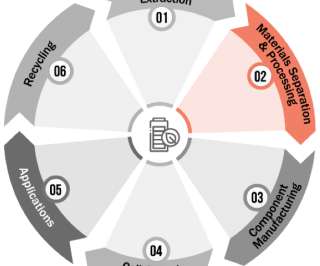DOE awarding $1.6B to 11 battery materials separation and processing projects as part of $2.8B funding
Green Car Congress
OCTOBER 20, 2022
Anovion, with its partners, collaborators and stakeholders, will build 35,000 tons per annum of new synthetic graphite anode material capacity for lithium-ion batteries used in electric vehicles and critical energy storage applications. Materials Separation & Processing (Cathode Minerals).














Let's personalize your content